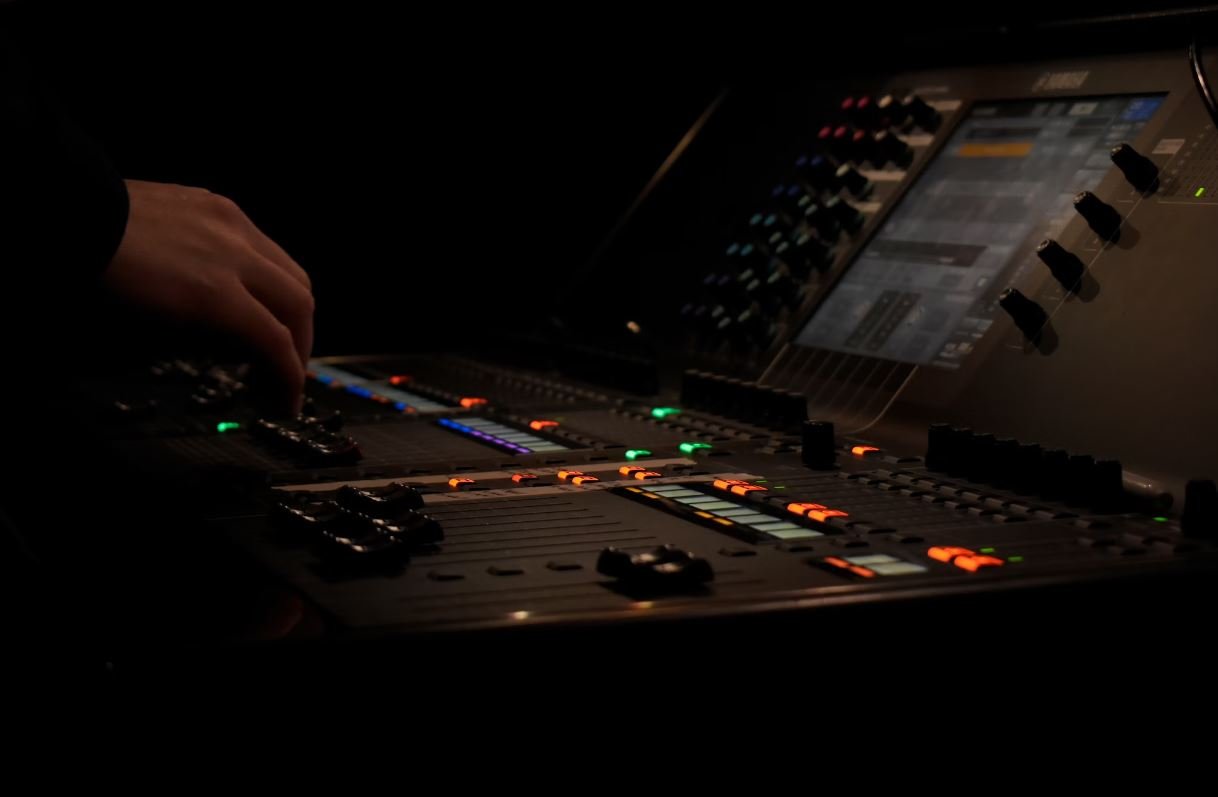What Is Beats per Minute
Introduction
Beats per Minute (BPM) is a term used in music to indicate the tempo or speed of a piece. It measures the number of beats that occur in one minute of time. Understanding BPM is essential for musicians, DJs, music producers, and even exercise enthusiasts as it can greatly influence the overall feel and energy of a song or workout routine.
Key Takeaways
- BPM measures the tempo or speed of a musical piece.
- It is important for musicians, DJs, and producers to understand BPM for creating and mixing music.
- Exercise enthusiasts can use BPM to match their workout intensity with the music tempo.
Understanding BPM
In music, BPM refers to the number of beats that occur in one minute. It provides a standardized way to measure tempo and helps musicians maintain consistent timing. BPM is typically represented as a numerical value and is indicated in musical notation or displayed on digital devices such as metronomes or DJ software.
In electronic dance music, faster tempos around 120-130 BPM are common, creating an energetic and upbeat atmosphere.
The Role of BPM in Music Production
For musicians and producers, BPM serves as a foundational element in music production. It helps establish the pace and rhythm of a composition, allowing different musical elements to synchronize effectively. DJs also utilize BPM to seamlessly mix songs together during sets, maintaining a consistent flow of energy on the dance floor.
The increased popularity of streaming platforms providing BPM data grants listeners more control over curating playlists based on desired energy levels.
BPM in Exercise and Fitness
Beats per Minute is not only relevant to the music industry but also to exercise and fitness. When listening to music during workouts, many individuals find it beneficial to match the BPM of the music with their exercise intensity. Higher BPM tracks are often used during high-intensity workouts, while slower BPM tracks can be selected for relaxation or cool-down exercises.
BPM Range Reference
| Genre | BPM Range |
|---|---|
| Slow Ballads | 60-80 BPM |
| Pop | 100-130 BPM |
| Dance | 120-140 BPM |
| Rock | 100-140 BPM |
| Hip Hop | 60-100 BPM |
BPM and Exercise Intensity
Choosing the right tempo for your workout can enhance your performance and help you achieve your fitness goals. Here’s a general guideline to match BPM with exercise intensity:
- Low Intensity: 60-100 BPM – Suitable for warm-up and cool-down exercises, stretching, and yoga.
- Moderate Intensity: 100-130 BPM – Great for activities like brisk walking, elliptical training, or light weightlifting.
- High Intensity: 140-180 BPM – Ideal for running, intense cardio workouts, and high-intensity interval training (HIIT).
BPM and Heart Rate
| BPM Range | Target Heart Rate Zone |
|---|---|
| 60-100 BPM | Warm-up / Fat Burning Zone |
| 100-130 BPM | Aerobic / Endurance Zone |
| 140-180 BPM | High-Intensity / Anaerobic Zone |
Incorporating BPM into Your Routine
Whether you’re a musician, DJ, or fitness enthusiast, understanding and utilizing BPM can greatly enhance your experience. Musicians can experiment with different tempos to evoke specific emotions or set the desired pace of their compositions. DJs can use BPM to seamlessly blend tracks during performances. Lastly, individuals can use BPM to match their exercise intensity with the tempo of their favorite songs, boosting motivation and performance during workouts.

Common Misconceptions
Beats per Minute
Beats per minute (BPM) is a commonly misunderstood concept in the world of music. Many people have misconceptions about what BPM actually represents and how it is used. It is important to clarify these misconceptions to help people better understand the significance of BPM in music.
- BPM is not the same as the tempo of a song. Tempo refers to the speed at which a piece of music is played, while BPM specifically measures the number of beats that occur in one minute.
- BPM is not limited to electronic or dance music genres. While it is true that BPM is commonly used to describe the tempo of electronic and dance tracks, it can be applied to any genre of music.
- BPM does not determine the quality or enjoyment of a song. Some individuals may think that a song with a higher BPM is automatically more energetic or exciting. However, the perception of a song’s energy or excitement depends on various factors beyond BPM.
Uses of BPM in Music Production
Understanding the uses of BPM in music production can help debunk common misconceptions around this topic.
- BPM can be used to match the tempo of different tracks during DJ sets or live performances. DJs often want to mix songs together seamlessly, and knowing the BPM of each track helps in synchronizing them.
- Music producers use BPM as a reference point when creating new tracks or remixing existing ones. It helps them maintain consistency and coherence throughout a composition.
- BPM is useful for creating playlists with a similar vibe or energy level. Knowing the BPM of songs enables the creation of cohesive playlists that flow well together.
Misconceptions about BPM and Exercise
There are misconceptions about the relationship between BPM and exercise that need clarification.
- Higher BPM does not necessarily mean a more effective workout. While fast-paced music can provide motivation and increase heart rate during exercise, the intensity of the activity ultimately determines its effectiveness.
- BPM alone does not determine the suitability of a song for exercise. Factors like personal preference, lyrics, and rhythm play a significant role in the perceived motivational effect of a song during a workout.
- BPM is not a one-size-fits-all approach to exercise. Different individuals have different preferences and fitness levels, so what works for one person may not work for another.

Understanding Beats per Minute (BPM) in Music
Beats per Minute (BPM) is a fundamental aspect of music that determines its tempo or speed. Whether you’re a musician, dancer, or simply someone who enjoys listening to music, understanding BPM can enhance your overall music experience. In this article, we delve into the importance of BPM and explore its relationship with different musical elements.
1. BPM Range for Common Musical Genres
By examining the typical BPM ranges for various musical genres, we gain insight into the diverse rhythms and styles found within them. Here are some examples:
| Genre | BPM Range |
|——————–|————–|
| Classical | 60-90 |
| Hip Hop/Rap | 80-115 |
| Techno | 120-150 |
| Funk | 100-130 |
| Reggae | 70-100 |
| Rock | 110-140 |
2. Effect of BPM on Dance Styles
BPM significantly influences the energy and movement associated with different dance styles. Explore how BPM correlates with the following popular dances:
| Dance Style | BPM Range |
|——————–|————–|
| Waltz | 28-35 |
| Salsa | 150-250 |
| Foxtrot | 120-136 |
| Breakdance | 100-150 |
| Flamenco | 60-80 |
| Ballet | 90-150 |
3. Impact of BPM on Heart Rate
The relationship between music and the human body extends to heart rate synchronization. Studies have shown that certain BPM ranges can have specific effects on our heart rates:
| Heart Rate Effect | BPM Range |
|——————–|————–|
| Relaxation | 60-80 |
| Light exercise | 80-120 |
| Moderate exercise | 120-140 |
| Intense exercise | 140-180 |
| Maximum intensity | 180+ |
4. Fastest and Slowest Songs Ever Recorded
The world of music showcases extremes in terms of tempo. Here, we list some of the fastest and slowest recorded songs:
| Song | Artist | BPM |
|————————————————-|———————–|——-|
| “Thousand” | Funeral for a Friend | 500 |
| “Please Say Something” | World’s End Girlfriend| 1 |
| “Thunderstruck” | AC/DC | 134 |
| “The Sound of Silence” | Simon & Garfunkel | 87 |
5. BPM and Popular Workout Routines
When choosing music for your workout, consider BPM to match your energy level with the desired intensity of exercise. Here’s a glimpse into the recommended BPM ranges for various workout routines:
| Workout Routine | BPM Range |
|———————-|————–|
| Cardio | 120-150 |
| Yoga/Pilates | 80-110 |
| High-Intensity | 150-180 |
| Stretching/Cool-down | 60-80 |
6. BPM Evolution Over the Past Decades
The music industry has seen shifts in tempo preferences over time. Here’s a table depicting the average BPM for popular songs from different decades:
| Decade | Average BPM |
|————|————–|
| 1960s | 120-130 |
| 1970s | 100-120 |
| 1980s | 110-130 |
| 1990s | 90-110 |
| 2000s | 120-140 |
| 2010s | 100-130 |
7. BPM in Film Soundtracks
BPM plays a crucial role in setting the mood and enhancing emotions in film soundtracks. Here’s a glimpse into the BPM ranges for different types of film scenes:
| Film Scene | BPM Range |
|——————-|————–|
| Action | 130-170 |
| Romance | 60-90 |
| Suspense | 90-120 |
| Comedy | 100-140 |
| Sad/Dramatic | 50-80 |
8. BPM and Psychological Impact
Beyond its physical effects, music’s BPM can shape our moods and emotions. Here are some psychological effects associated with specific BPM ranges:
| Psychological Effect | BPM Range |
|———————-|————–|
| Calming | 50-70 |
| Upbeat/Happy | 100-120 |
| Energetic | 120-150 |
| Hypnotic | 70-90 |
| Melancholic | 80-100 |
9. World Records for Fastest and Slowest BPM
Humans have pushed the boundaries of musical tempo, resulting in the establishment of various world records. Here are some notable records for the fastest and slowest BPM:
| Record Type | BPM |
|———————-|—————–|
| Fastest BPM | 1000+ |
| Slowest BPM | 0.2 |
10. BPM in Electronic Dance Music (EDM)
EDM, characterized by its energetic beats and pulsing rhythms, relies heavily on BPM. Let’s explore BPM ranges for different EDM sub-genres:
| EDM Sub-genre | BPM Range |
|———————-|————–|
| House | 120-130 |
| Trance | 130-150 |
| Dubstep | 140-160 |
| Drum and Bass | 160-180 |
| Hardcore | 160-200 |
| Techno | 130-150 |
In conclusion, Beats per Minute (BPM) serves as a crucial element in music, impacting various aspects of our lives, including dance, exercise, heart rate, and emotional experiences. Understanding BPM allows us to appreciate and utilize music in more nuanced and fulfilling ways.
Frequently Asked Questions
What is the definition of “beats per minute” (BPM)?
Beats per minute (BPM) is a unit used to measure the tempo or speed of music. It represents the number of beats or pulses occurring within a span of one minute.
Why is knowing the BPM of a song important?
Knowing the BPM of a song is important for various reasons, including creating playlists for specific activities such as running or dancing, DJing and mixing tracks seamlessly, or understanding the energy level of a piece of music.
How can I find the BPM of a song?
There are several ways to find the BPM of a song. You can use specialized software or mobile apps that analyze the audio and determine the BPM automatically. Alternatively, you can manually count the beats for a period of time and calculate the average BPM.
What is the BPM range for different music genres?
The BPM range for music genres can vary significantly, but here are some approximate ranges:
– Classical: 60-80 BPM
– Jazz: 90-120 BPM
– Pop: 100-130 BPM
– Rock: 120-160 BPM
– Electronic: 120-140 BPM
– Hip Hop: 70-110 BPM
These ranges are not fixed and can overlap between genres.
Can the BPM of a song change?
Yes, the BPM of a song can change within the same track. Some songs may have tempo variations or intentional speed alterations, such as speeding up or slowing down certain sections for artistic purposes.
Are there any tools to help me calculate BPM?
Yes, there are numerous online tools and software applications available that can help you calculate the BPM of a song. Some examples include virtual DJ software, BPM counters, and metronome apps.
Is BPM only relevant to electronic music?
No, BPM is not exclusive to electronic music. While it’s often associated with electronic genres due to their prominent use of beats and tempo, BPM applies to all types of music, including classical, jazz, pop, and rock.
Can BPM affect the mood or energy of a song?
Absolutely. The BPM directly influences the mood and energy of a song. Higher BPMs generally result in more energetic and fast-paced music, while slower BPMs tend to create a relaxed or melancholic atmosphere.
Are there any health benefits associated with listening to music with certain BPMs?
Listening to music with specific BPMs can have various effects on our bodies and minds. For example, faster BPMs may increase heart rate and provide an energy boost during workouts, while slower BPMs can help promote relaxation and reduce stress.
Can DJs use BPM to mix or transition between songs?
Yes, DJs often utilize BPM information to seamlessly mix or transition between songs. By matching the BPMs of two tracks, DJs can create smoother and more harmonious transitions during their performances or sets.




